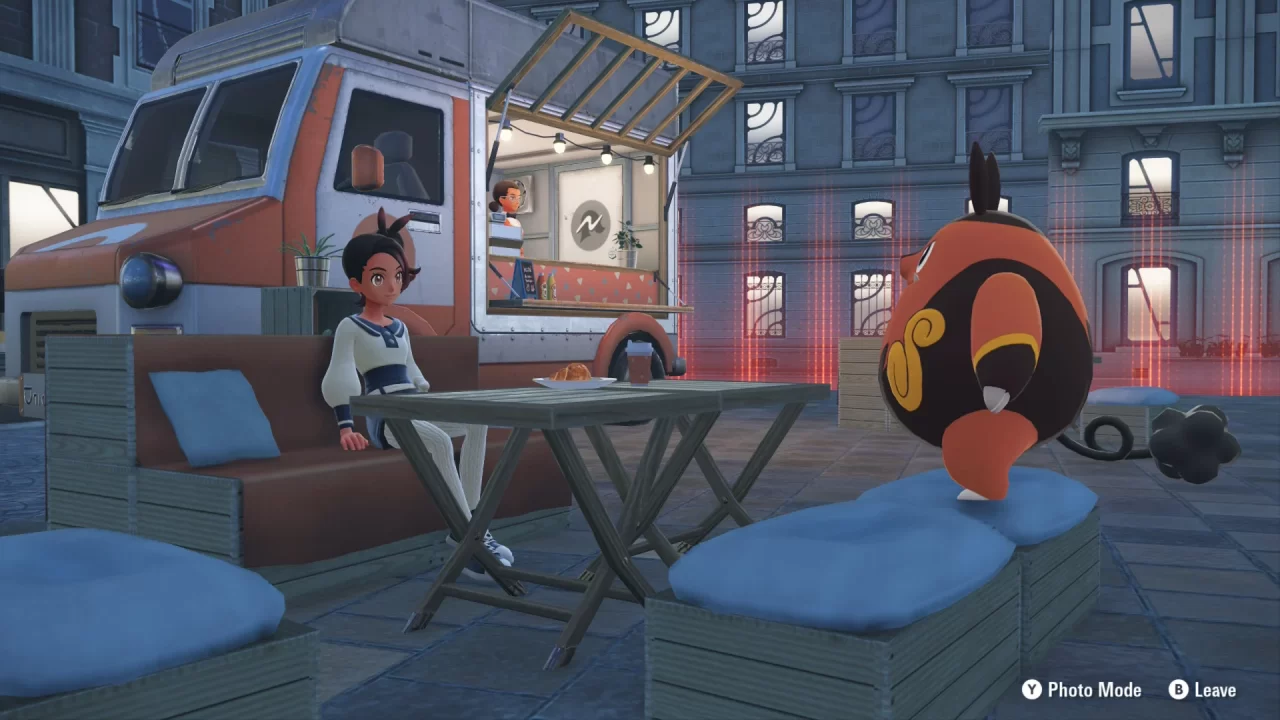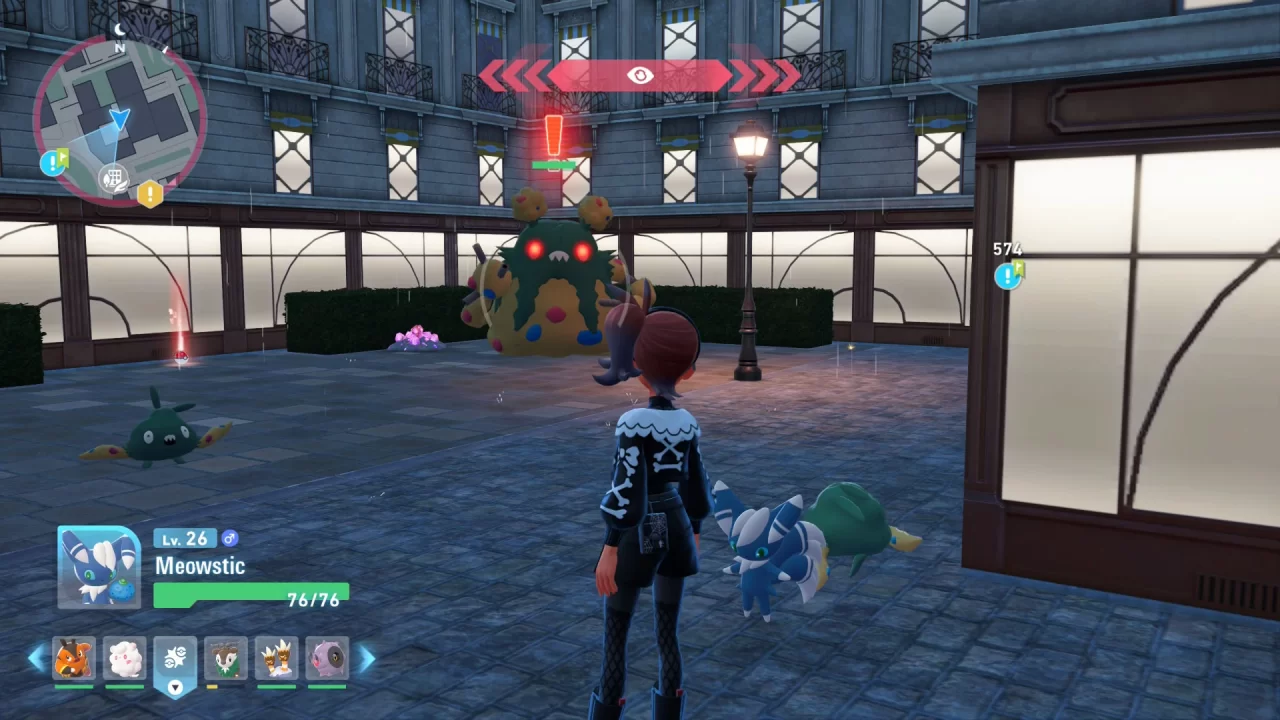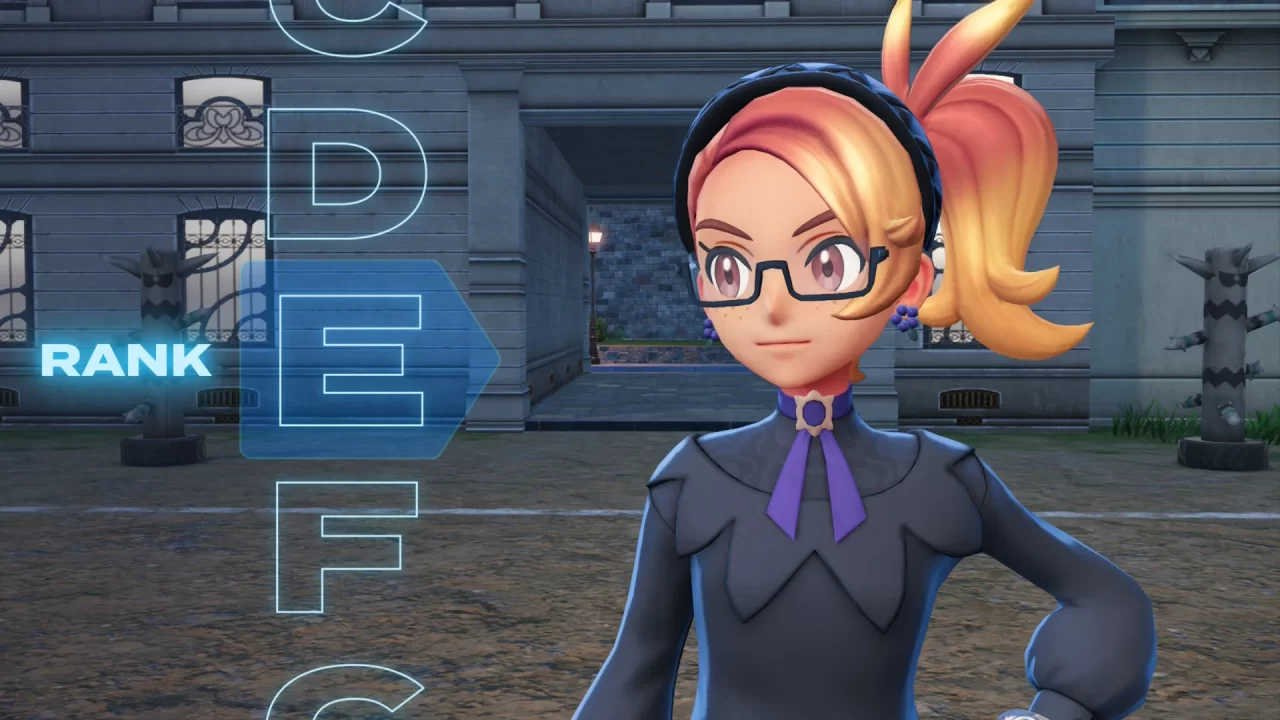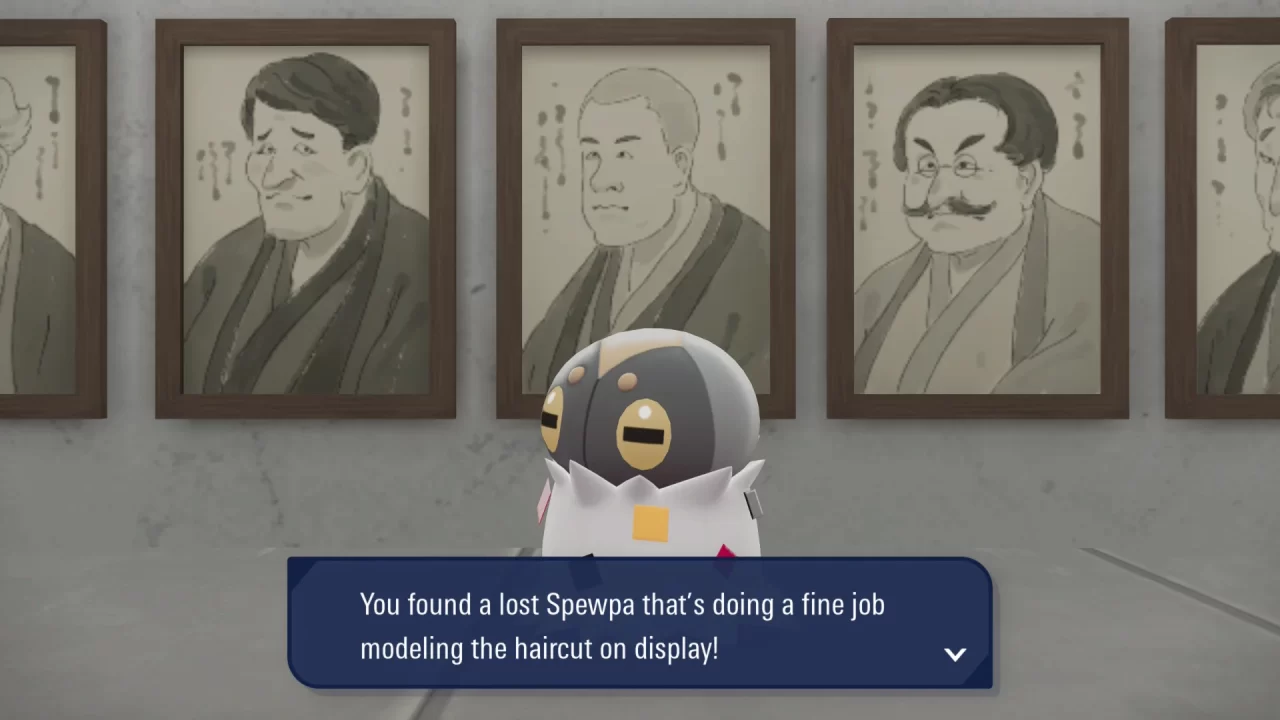Marketing tells us that personal travel is a time to relax, but one of its greatest benefits is getting to break out of our comfort zones. New places, people, and experiences push us to grow; on the other hand, absolutely no familiarity will leave you lost, with no way to make the most of your time. Finding balance between the accustomed and the new is crucial. Although Pokémon Legends: Z-A returns to a familiar city, its fresh approach to Pokémon battles makes the trip worthwhile. However, certain stops along the way are too conventional, resulting in a vacation that, while fun, doesn’t feel like it makes the most of its potential.
In Pokémon Legends: Z-A, we visit Lumiose City from X & Y’s Kalos region. There are wild Pokémon all throughout the city, and it’s great to see them interacting with their urban environment. You may find mouse-like Pokémon such as Dedenne munching on the wares of a Berry-selling stall, while plant-adjacent Pokémon like Flabébé float around flowering bushes. But there’s only so much species diversity that can exist within a single city, so Wild Zones pop up as the game progresses to remedy this limitation.
Wild Zones are blocks of land that you can only access through designated entry points. These segmented areas sometimes have slight slight environmental alterations from the rest of Lumiose, meant to help justify the gathering of certain Pokémon types—but it feels awkward in practice. Drastic climate changes, like the constant snow in Wild Zone 12, are jarring. Most of the time, the alterations are minor, such as Wild Zone 16 adding a layer of water over the ground, though that draws attention to how needless the area divisions feel. There’s no noteworthy difference between Pokémon behaviors across areas, either. They can be aggressive and chase you down no matter where you are, and even gigantic Alpha Pokémon can appear outside of Wild Zones.
There’s also no difference between the way you capture Pokémon in and out of the Wild Zones. If you sneak up on a wild Pokémon, you have the chance to catch it with a single Poké Ball with no need to enter battle. But if that one Poké Ball isn’t enough, you’ll need to battle and weaken the Pokémon before trying again, in series tradition. It’s disappointing that despite utilizing the Legends subtitle, Legends: Z-A doesn’t implement the strategic catching mechanics of its predecessor, Legends: Arceus. Gone are the days of throwing Berries to distract Pokémon and lower their guard, or tossing down smoke bombs to better situate yourself before throwing a Poké Ball. Catching Pokémon in Legends: Z-A doesn’t feel meaningfully new or interesting, but like a watering down of a previously engaging and fun system.
What’s worse than the removal of Legends: Arceus’s unique capturing strategies is the dissolving of its absorbing gameplay cycle centered around exploring and catching Pokémon. In Legends: Z-A, there isn’t much, if any, incentive to return to a Wild Zone once you’ve caught every Pokémon there. You only need to catch a Pokémon once to log it in the Pokédex, and Pokémon don’t give items when caught, defeated, or released like in Legends: Arceus. You’re encouraged to catch each type of Pokémon 50 times to complete “Mable Requests” for enticing rewards like TMs and, at the very end, the Shiny Charm. But without any extra motivation, it’s all too easy to rush through these tasks by catching low-level Pokémon and never give them a passing thought again. The result is a game that seems to emphasize catching Pokémon, without giving much reason to catch many Pokémon. And without any reason to catch the Pokémon you pass by, there’s less opportunity to appreciate them and their connection to Lumiose.
Similarly, there isn’t much reason to sightsee around Lumiose the way there was in Legends: Arceus‘s Hisui. Crafting doesn’t return, so most blockades such as rocks and thorns are just temporary nuisances. Mega Crystals are the exception, as they leave behind Mega Shards when destroyed, which you exchange for Mega Stones or Exp. Candy. Shockingly, this makes it more compelling to crush crystals than to catch Pokémon. The random placements of Mega Crystals and the items littered around the solitary Lumiose make exploration aimless rather than intentional.

Although Legends: Z-A is self-contained in its setting, it isn’t self-contained in its gameplay. Mega Evolutions, powerful Pokémon forms introduced in X & Y, return as one of Legends: Z-A’s biggest draws, yet not all of them are available normally. Only Pokémon from the first four generations received Mega Evolutions in X & Y, leaving its own starter trio of Chespin, Fennekin, and Froakie behind. These three finally have Mega Evolutions in Legends: Z-A, but the only way to obtain them is to reach a specified rank in online play. The Mega Stones required for these starters’ Mega Evolutions changes each “season,” so if you take your trip during a season when your favorite isn’t an online reward, you won’t get the chance to use it during your story playthrough. Although some post-launch tweaks have made obtaining certain stones easier, they’re still time-limited, and online play requires a Nintendo Switch Online membership, which can easily lock some players out of obtaining the Mega Stones for their favorite starters.
Because these Mega Evolutions are only obtainable through online play, they don’t make any appearances in the story. In a way, this follows Legends: Arceus’s lead, as it too didn’t give any special forms to Sinnoh’s starters, but there are better Arceus inclusions that Z-A didn’t keep. Legends: Arceus introduced the brilliant Link Cable item that allowed you to evolve Pokémon that normally evolved by trading, like Kadabra into Alakazam. In Lumiose City, the Link Cable item has disappeared, requiring you to once again set aside time and a friend to complete your Pokédex. You can catch some trade evolution Pokémon in Wild Zones in later parts of the game, but that makes it all the more confusing that the Link Cable item doesn’t return to alleviate the inconvenience.
Another annoyance in Legends: Z-A is the EV (“Effort Values”) and IV (“Individual Values”) system of the traditional mainline games. This complicated stat management system returns without any explanations or quality-of-life improvements, despite Legends: Arceus introducing the streamlined, intuitive effort level system. And despite the inclusion of EVs and IVs, not all of the mainline mainstays make appearances. Pokémon Abilities are conspicuously absent here despite their importance to many Mega Evolutions’ identities. Of course, not everything could be packed into luggage and brought into Legends: Z-A, but you can really feel the absence of what was left at home.
When you travel, you should always pack an up-to-date map. Your map of Lumiose has plenty of fast travel points, and it marks most important locations, including clothing stores, specialty shops like the Poké Ball store, and Pokémon Centers. But certain stores, like marketplaces that sell Berries and Nature-changing Mints, are unmarked. It also isn’t clear when you can access courtyards from the ground. Buildings with archways appear the same way as buildings without, so it’s impossible to differentiate areas that you can walk into from areas that you need to drop down into from the rooftops.
The map in the Pokédex is arguably worse. It shows Pokémon that appear in Wild Areas just like the main map. But Pokémon that appear outside of Wild Areas only have vague descriptions, even if they can only appear in one or two locations. When you do know where to look for your target Pokémon, most of Lumiose’s buildings look the same, like boxes with windows painted on. Legends: Z-A may not have the highest polygon count, but it isn’t an innately ugly game—it just lacks visual interest due to the sameness of Lumiose’s buildings, which comprise the majority of its setting. This large-scale city feels like it’s made of toy blocks stacked beside each other, which doesn’t encourage exploration or inspire memorable moments.
What is memorable are the Trainer battles. When night falls over Lumiose, part of the city is designated as a Battle Zone. Instead of encountering wild Pokémon, you battle against other Trainers. Winning earns you points to progress to the next rank, with the main story goal of making it all the way to Rank A. The Zones are a clever way to implement battling contained within the city, but the battles themselves are Legends: Z-A’s crown jewels.
Instead of selecting your Pokémon’s actions in turns, Legends: Z-A battles are entirely real-time. Each Pokémon attack has a cooldown, placing focus on the order moves are used rather than simply repeating one that’s super effective. Your Pokémon will follow you as you move around, so positioning to dodge enemy strikes—or to hit multiple opponents at once—is an additional important consideration. Using items is also placed on a cooldown, making battles innately more strategic and less about “spamming” than in previous titles. Visiting Lumiose is worth it for these new battles alone, a testament to the potent power of the unfamiliar.
The one area where familiarity benefits Legends: Z-A is the Rogue Mega Evolution battles. These raid-style fights pit you, and sometimes an NPC ally, against a large-scale Mega-Evolved Pokémon that targets you with flashy special attacks, in the vein of Noble Pokémon from Legends: Arceus. Although there could stand to be more battleground variety, there’s enough distinction between the different bosses’ attack effects and patterns to make each one engaging. It’s not enough to just over-level your Pokémon to breeze through these fights—you need to learn the enemy’s attack patterns and master maneuvering, too.
Defeating the Rogue Mega-Evolved Pokémon and rising in the ranks in Battle Zones moves the story along, and you’ll get to meet many of the friendly faces around Lumiose. As with the gameplay, the narrative is at its best when it focuses on its new, endearing cast, including its “generics.” Over one hundred Side Missions bring Lumiose to life with a wide variety of tasks to complete. Most take on a sillier nature, like getting a giant Avalugg so a woman can take pictures of her four Bergmite on it, but they all add needed depth to the limited scope of the singular city setting. The main story grows clunky when it falls back on references to X & Y, though. There are awkward, tone-deaf discussions about accountability, while intriguing conflicts, such as Lumiose citizens expressing concern over the invasiveness of Wild Zones, are waved away with unsatisfying resolutions.
The way Legends: Z-A pulls from the traditional mainline games and Legends: Arceus but ultimately doesn’t incorporate the best elements of either is similarly unsatisfying. Still, a vacation must be truly catastrophic to be considered “bad,” and Legends: Z-A is plenty fun with its real-time battles and Rogue Mega-Evolved raids. Yet the game’s itinerary feels like it isn’t making the most of what the Legends sub-series has to offer. Instead, Pokémon Legends: Z-A feels like yet another in a long line of Pokémon game with growing pains. With the commonplace around every corner, you may feel the experience is one big tourist trap, but it’s still a trip worth going on and making the most of while you’re there.






